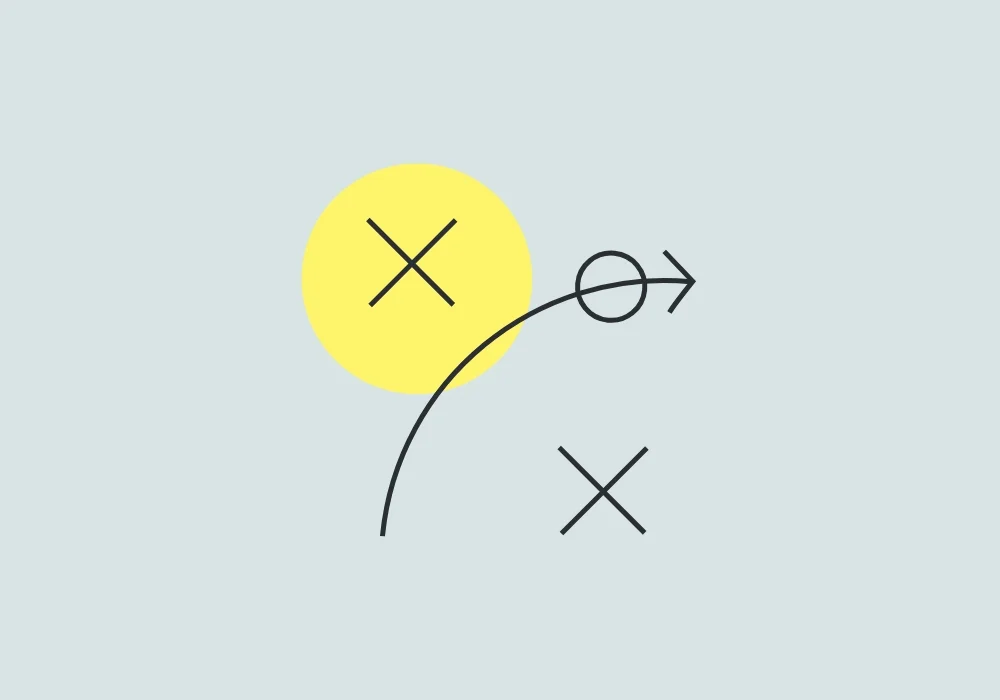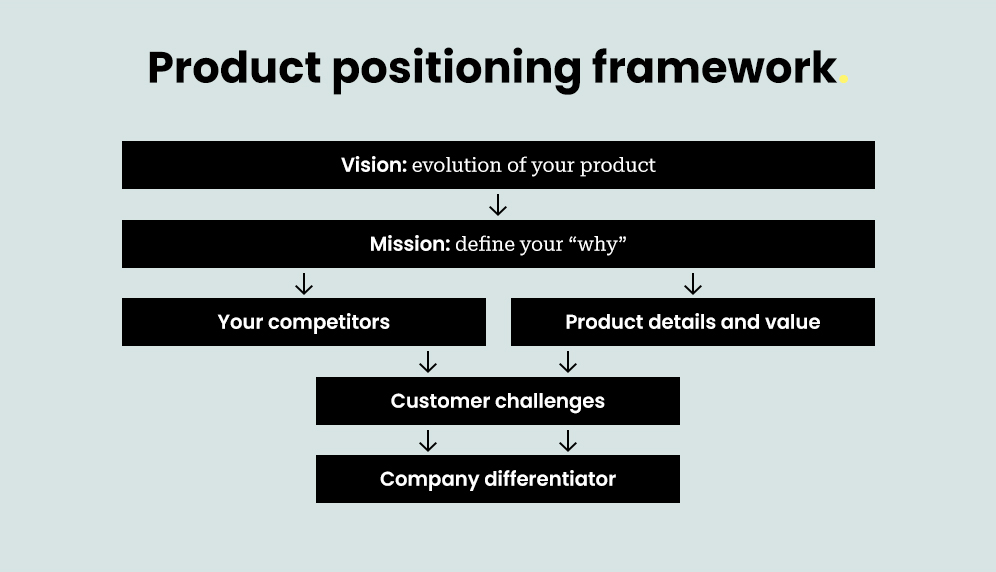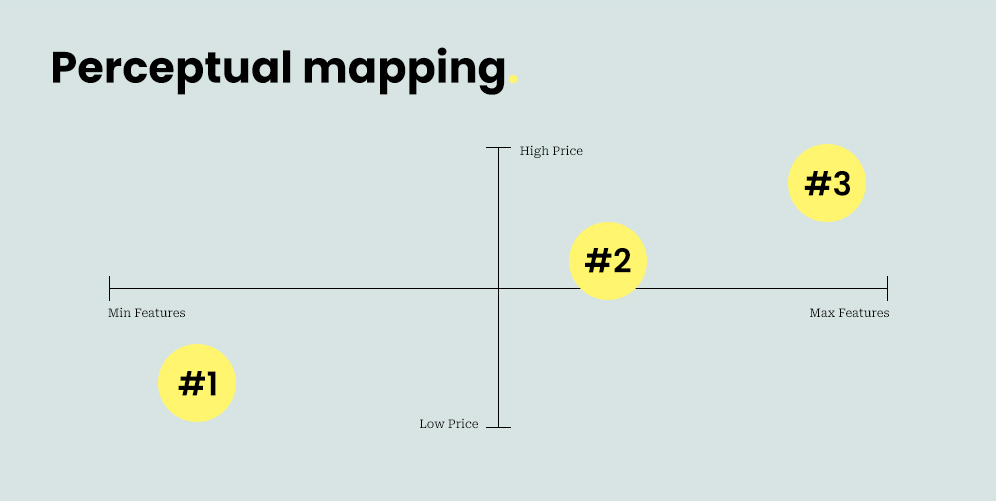
5 essential tips for positioning your SaaS product
What you need to know about product positioning and what it can do for your company.
Positioning is an essential element of product marketing. When you get it right, you differentiate your product from competitors and make it stand out in the eyes of potential customers – winning more sales and revenue in the process.
But if you get it wrong, the effects can be disastrous.
This article shares five essential recommendations that all marketers should consider when positioning their products.
The ultimate goal of product positioning
Positioning can be an elusive concept as marketers and researchers have differing interpretations of what it means. Still, key themes emerge from the many definitions. Philip Kotler, renowned as the ‘father of modern marketing’, captures the overall gist in one sentence:
Positioning is the act of designing the company’s offering and image so that they occupy a meaningful and distinct competitive position in the mind of the target market.
Essentially, the ultimate goal is to firmly establish your product in your customers’ minds so that they’re able to imagine future situations where they might buy from you.
When these situations actually happen, your product would be a part of their ‘evoked set’ – a cognitive term used to describe the brands that come to people’s minds whenever a particular need arises.
Why it’s important to get your positioning correct
Customers who are ready to buy are almost always searching for the ‘best fit’ solution for their needs.
In most of these cases, your product will be competing with many others, making positioning crucial for helping your offering stand out effectively. Without proper positioning, your sales cycles can become drawn out, and you risk a higher customer churn rate.
For SaaS companies, successful positioning is even more important. Software products often share similar features and, unlike tangible B2C products, they tend to be more abstract. This makes it harder for customers to compare them quickly. As a result, marketers must put extra effort into establishing a clear and compelling product position.

Tips for positioning your product
Get your segmentation and targeting right first
According to the tried-and-true STP process, positioning must come after segmentation and targeting. So before you consider ways to effectively position your software, make sure that you have a clear understanding of the various segments in the market – and the ones you want to focus on. Otherwise, your positioning may not be as effective.
Consider the different variables. Most B2B companies use simple factors such as company size and industry type, but marketers may also explore behavioral and needs-based segmentation (if they have available data). You should also select segments to target based on two things: how lucrative the segment is, and your company’s competitive strengths.
If you have enough organizational resources to meet the needs of a fast-growing and sizeable market segment, then they should be your primary target.

Choose your product positioning approach carefully
Positioning approach refers to the ways you’ll compete in a particular market. This informs all your marketing mix decisions (product, price, place, and promotion).
Every approach has advantages and disadvantages. Some businesses focus on just one, but many use a combination of strategies to minimize risk. It’s important that your combination makes sense, or you’ll risk confusing your customers (more on that later).
Below are some of the most relevant positioning strategies for B2B products and solutions.
Quality
Positioning your offering as a superior, higher-quality alternative to your competitors’ products could be a suitable strategy if your target market is discerning, demanding, and relatively price-insensitive.
This approach requires effective quality assessment and assurance processes (e.g. technical reviews and code testing) to ensure that your claims of quality are believable, meaning a focus on raising your company image and reputation is crucial.
Pricing
All businesses aim to keep costs as low as possible, but some choose to make price a part of their positioning strategy. This can be very effective for companies that serve particularly price-sensitive market segments (such as SMEs).
However, positioning your product as a cheaper alternative carries some risks. Firstly, you may not be able to scale as quickly if you focus only on keeping costs as low as possible. Secondly, it may hinder you from building a sustainable competitive advantage, as you may become vulnerable to new competitors entering the market with more innovative offerings.
Innovation
When markets change as a result of technological advancements, there may be a good opportunity to position your product based on its innovativeness. To maximize your chances of success, your target market should be adventurous early adopters by nature. New product development and market identification should also be a strength within your team.
Benefits
A powerful and popular way to position your product is to highlight the unique benefits it provides and how it directly solves your customers’ problems. You may have noticed some companies positioning themselves as a solutions provider. In order to succeed with this approach, you should segment customers based on the benefits they’re seeking (instead of basic demographic characteristics).
Be careful of major positioning risks
Good positioning is clear, believable, and has an appropriate level of focus. Once your target customers become aware of your offering, they will compare it to other alternatives based on relevant criteria. Once this has happened, it can be difficult to change their minds.
For this reason, it’s essential that you prevent the following:
Under-positioning
When your target customers are aware of your product, but don’t see anything special about it, you’ve under-positioned your software. Other signs of under-positioning may include inconsistent sales volumes and a lack of leads. To overcome this, you may need to audit your marketing activities and identify opportunities to communicate your USP more concisely.
Over-positioning
Over-positioning is when customers have an overly narrow understanding of your software. For example, you may have focused on a feature or benefit that your target segment is only mildly interested in. This limits your sales potential. Broaden your messaging to make sure potential customers have a broader and more complete perception of what you offer.
Confused positioning
If your messages change frequently or appear contradictory, you risk confusing your customers. Companies going through a rebranding or repositioning process should exercise caution.
Doubtful positioning
There are situations where the buyer is aware of what your software does but doesn’t believe the claims you made. This is called doubtful positioning, and it can be challenging to overcome. You may prevent this from happening by choosing the right positioning strategies.

Create perceptual maps to effectively visualize market gaps
Perceptual mapping is a technique used by product marketers to better understand how products in a relevant category are perceived by target customers. It can help you evaluate whether your current positioning strategy is effective and identify market gaps more easily.
A common mistake when creating perceptual maps is to visualize the products’ positions based on your own beliefs. This should be avoided. Instead, position them according to how customers perceive existing solutions in the marketplace. Although perceptual mapping is a qualitative exercise, customer data should guide the process.
Typically, perceptual maps are represented as plot graphs with four quadrants. The labels for the x and y axes should reflect what is most relevant to your customers. For example, if you offer a SaaS product, you might position products according to ‘features’ and ‘price’.
Don’t rely solely on positioning statements
Positioning is often treated as a one-off, fill-in-the-blanks exercise because conventional marketing wisdom promotes following traditional formulas such as:
“For [target market], our product is a [market category] that provides [defined value]. Unlike [competitive alternative], we have assembled [key attributes].”
However, relying solely on such positioning statements is not an effective strategy for multiple reasons:
- Interdependence of components: This formula overlooks the interconnected nature of each component of your positioning statement.
- It’s too abstract and theoretical: It doesn’t provide direction on which element you should focus on first.
- It promotes a product-first mentality: This approach promotes a product-first mindset and doesn’t offer insights into underlying market dynamics.
Instead, aim to gather business intelligence from your audience, team, competitors, and the market. This approach paints a more comprehensive and dynamic picture, helping you develop a positioning strategy that better resonates with your target market.
Key takeaways
- The ultimate goal of product positioning is to establish your product in prospects’ minds.
- Before you consider positioning, make sure you’ve developed your segmentation and targeting strategy first.
- There are many positioning approaches you can choose. This will depend on how you want your customers (existing and potential) to perceive your product.
- There are four positioning risks you should be mindful of: under-positioning, over-positioning, doubtful positioning and confused positioning.
- Perceptual maps can help you visualize market gaps and check if your current strategy is working. Use data to guide you when creating them.
- Crafting a strong positioning statement requires you to ask four questions: who you help, what your product does, what makes it different, and how it can help your customers’ businesses.
This post has been updated on August 5th, 2024. Originally published: February 8th, 2022
Read the latest positioning trends and insights.
Tap into our brand and product positioning, storytelling, and creative expertise to inspire your next strategic move.


